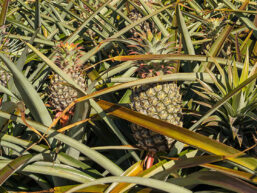Related Posts
Blooming Delish
24 May 2021 / Food Facts
Flowers are often identified as symbols of beauty, love and happiness. This celebration of nature is not limited to the paddock or garden but can be brought to the plate as well! Edible flowers have long featured in many culinary traditions around the world and learning to add more flowers to our plates can tickle our taste buds and lift our spirits.
From Bushfire singed vegetable crops to a blooming flower farm…
In 2019, not long after Lana from IndeeStone Flower Farm and her family moved to the region, a bushfire ravaged through the Capricorn Coast region leaving a trail of despair and heartache for many producers.
Lana and her family were evacuated when the intense Cobraball bushfire began to threaten their home and lives. When they returned, a stunning array of flowers bloomed across their once thriving vegetable patch. Lana contacted the Farnborough General Store which had been a makeshift community hub during the bushfire for many locals. She wanted to give the flowers away and bring some sunshine into the lives of those who had experienced the Cobraball bushfires.
With a resounding “YES” from Naomi at the Farnborough Store, Lana began spreading a little happiness and growing a business idea. Today, IndeeStone Flower Farm is an organic farm that uses sustainable methods to improve the soil health creating beautiful, tasty and nutritious flowers for your kitchen bench or plate all year round.
A simple kindhearted gesture turned into a blooming business; one that spreads joy across the Capricorn Coast.
11 edible flowers and how to eat more of them:
- Violas – come in a variety of colours, shapes and sizes. With a very mild flavour they can work as a garnish for most sweet and savory dishes.
- Nasturtiums -flowers have a sweet yet peppery flavour, not unlike radishes and their bright warm colours are sure to give your next dish the wow factor. Like zucchini flowers, nasturtiums can be stuffed then steamed or fried. When mixed with chives, the blossoms blend beautifully into potato salad.
- Marigold – their peppery, saffron like flavour (marigold is known as poor man’s saffron) and golden hue adds vibrancy to stews, stir fries, rice, salad, soups, pasta, scrambled eggs and omelettes.
- Zinnias – mild bitter taste but bright in colour. These are best used as a garnish or mixed in with the lettuce. They are available in a rainbow of colours and are a good way to add happiness to your plate.
- Dianthus (carnations) – clove-like taste. Can be steeped in wine sugar or used to embellish desserts. Can add zest to ice cream, sorbet, fruit salad, even seafood and stir fries.
- Lavender – a serving of lavender can elevate a dish to the next level. With a fragrant flavour, the culinary uses are endless: from biscuits, cakes, custard, ice cream, jams, jelly, scones, shortbread and sorbet or even paired with lamb.
- Snapdragon – the flavour is reminiscent of chicory which makes snapdragons suitable for savoury offerings such as salad and canapes. Their ability to hold onto a glass also makes them ideal for cocktails.
- Common daisy – the common daisy provides a subtle tasting flavour. Freeze daisy flowers in ice cubes or float them in drinks.
- Chamomile – you are probably familiar with chamomile as a soothing tea. But did you know the aromatic apple-flavoured, daisy-like flowers also make a delightful addition to cakes, biscuits, bread or puddings? Or sprinkle onto salads and soups and take your next meal to the next level.
- Dill – has delightful umbrella-shaped flower heads beloved by beneficial insects such as hoverflies. The bright lime flowers and feathery foliage look fantastic in the garden and can be added fresh when pickling vegetables or to other dishes.
- Sunflowers – petals can be eaten. Great way to add sunshine to your plate.
A sprinkling of edible flowers will transport your next meal from every day to gourmet. If you don’t consider yourself a green thumb, you can buy some edible flowers from Lana at IndeeStone Flower Farm available at Farnborough Country Life Store.
NOTE: Not everyone is as environmentally and health conscious as Lana, so it is important to only use edible flowers that are specifically grown for consumption. Commercially grown flowers sold in florists, especially roses, are commonly treated with a variety of chemicals and are unsafe to eat. Some flowers, such as elderflowers, need fermenting or cooking before eating so be sure to do your research or ask your local grower before consuming.













